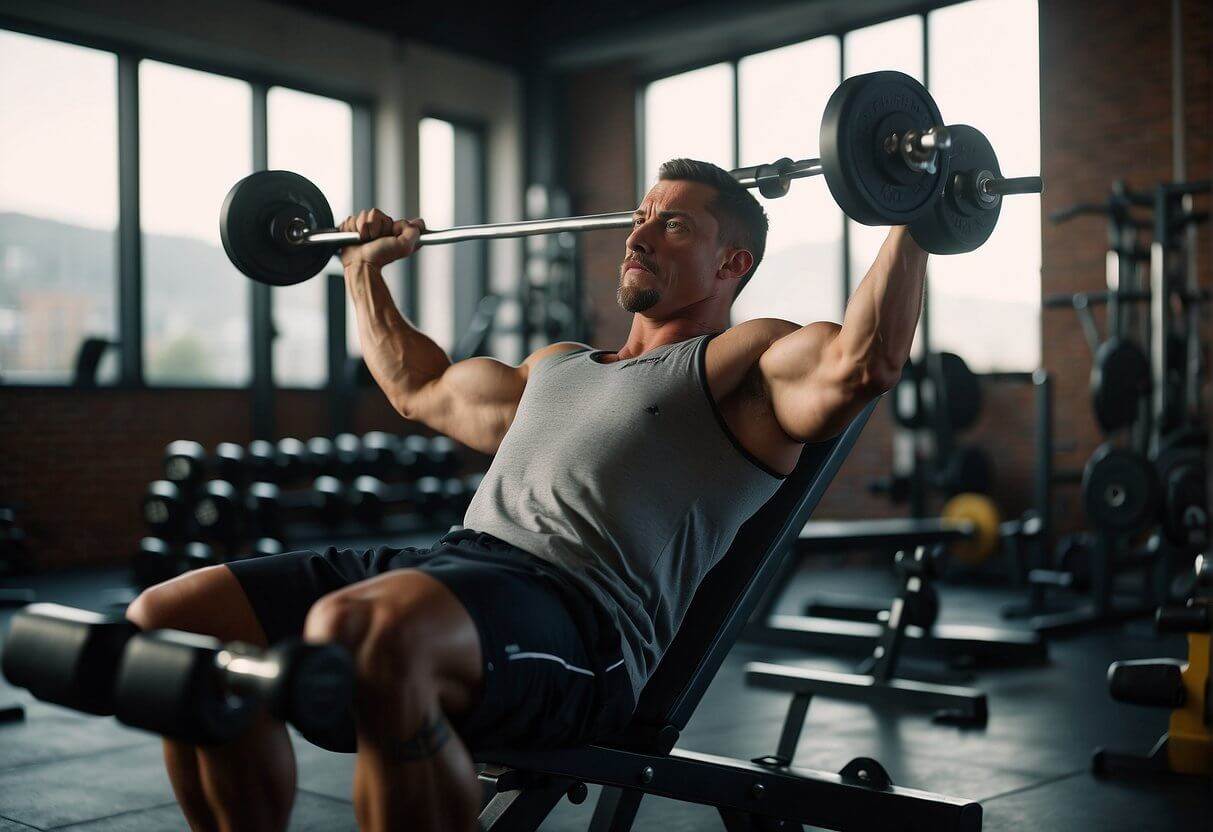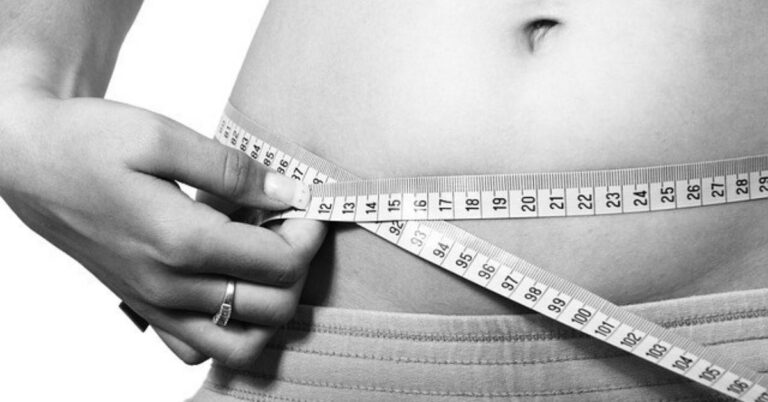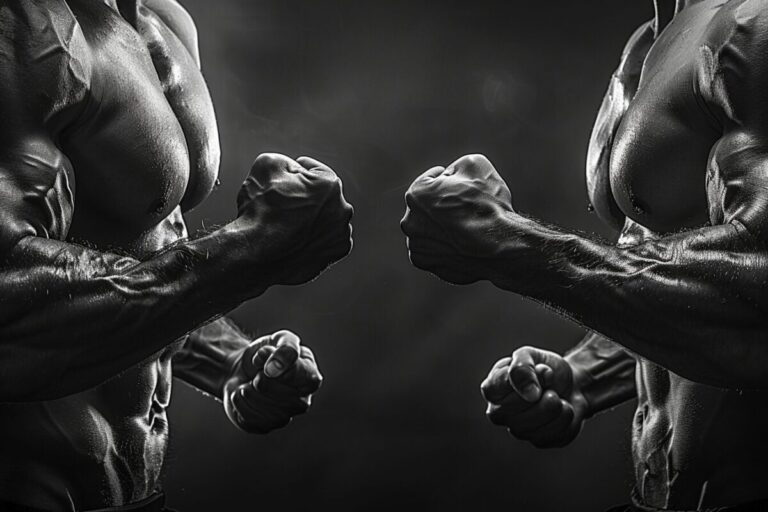Ever woke up the day after a bicep workout and feel like your arms are permanently bent in a flexed position? You’re not alone.
It’s like your muscles have decided to go on strike after the hard work you’ve put them through.
Welcome to the world of Delayed Onset Muscle Soreness, or DOMS for short.
It’s the kind of soreness and stiffness that makes you groan when you reach for your morning coffee or cringe when you try to put on a jacket.
But before you start worrying that you’ve turned into a real-life action figure, unable to straighten those arms, let’s look at why your arms are rebelling, how to tell if it’s just soreness or something more sinister, and what you can do to alleviate the pain and get back to feeling like the gym warrior you are.
Key Things to Know
- DOMS typically arises 24-72 hours after new or intense exercise, signifying muscle growth and repair.
- Eccentric exercises, like the lowering phase of bicep curls, often lead to DOMS due to muscle fiber microtears.
- Hydration and nutrition significantly impact muscle recovery and stiffness post-workout.
- Differentiating between DOMS and injury is crucial; persistent severe soreness may require medical consultation.
Understanding Muscle Soreness
When you push through a tough bicep workout and wake up feeling like your arms might have turned to stone, that’s your body telling you it’s going through some repair work. Let’s get into why that happens and what’s going on inside those pumped-up muscles of yours.
Mechanisms of Delayed Onset Muscle Soreness (DOMS)
DOMS, short for Delayed Onset Muscle Soreness, kicks in when your muscles are screaming about the workout you’ve just put them through.
Usually, you’ll start feeling it between 24 to 72 hours after exercise, especially if you introduced new movements or bumped up your intensity.
Imagine your muscle fibers like loads of tiny ropes. These “ropes” get microscopic tears during your workout, particularly when they’re put under a lot of strain.
It’s a sign they’re growing, but it can make straightening out those arms a challenge!
Pain, stiffness, or a reduced range of motion in your muscles are your classic symptoms. It’s like your body’s red flag saying, “Hey, we’ve just been through a bit of a battle here!”
Role of Eccentric Exercises in Muscle Soreness
Now, let’s talk about eccentric exercises — these are moves where your muscles lengthen under tension.
Think of the downward phase of a bicep curl.
That’s when your muscles act like brakes to control the weight as it lowers.
It turns out; this is the part of the exercise that’s infamous for causing those microscopic muscle tears leading to DOMS.
These tears aren’t bad; they are actually crucial for building stronger muscles. But they are the reason you might feel like your arms are stiff as boards after a workout.
Have you ever wondered how microtears work in your favourite bodybuilders or athletes? It’s the same thing—they just have a lot more practice at getting through it!
Remember, muscle soreness is a normal part of the process towards gaining strength and endurance.
Biceps Anatomy and Function

Understanding your biceps’ structure is key to knowing why they sometimes say “nope” after a tough workout with bicep curls. So, let’s look at what makes up your biceps and how they function to move that elbow of yours.
Structure of Biceps Brachii
The biceps brachii, commonly known as the biceps, is a prominent muscle group located at the front of your upper arm.
This duo of muscles—the long head and the short head—work together like best mates.
They start from different spots on the shoulder and join to attach to the radius bone in your forearm through a tendon. When you’re showing off your muscles, that ‘pop’ on your arm, that’s them!
Biceps and Elbow Joint Mobility
Your biceps are not just there to look pretty; they play a crucial role in elbow joint mobility.
Think of them as the go-to muscles for pulling off movements like bending your arm or twisting your forearm.
They work particularly well during eccentric contractions—that’s the action when you’re slowly lowering the weights during bicep curls.
These controlled moves are ace for muscle building, but can also lead to tendonitis if you overdo it without proper flexibility training.
Differentiating Between DOMS and Injury
When you’re struggling to straighten your arms after working your biceps, it’s probably worthwhile knowing whether you’re experiencing Delayed Onset Muscle Soreness (DOMS) or a more serious injury.
Recognising Signs of Serious Injury
If you’re feeling immediate pain during or right after your workout, this isn’t the usual muscle fatigue.
Muscle strain symptoms can include a sharp pain, and you might even hear a popping sound—these are clear red flags.
A strained muscle often results in limited range of motion, and you may notice swelling and bruising which isn’t typical with DOMS.
Difference Between DOMS and Serious Injury
DOMS vs. injury – DOMS starts a day or so after a good workout and feels like a general, achy soreness.
In contrast, an injury is more likely to show up without much warning, causing more concentrated and intense pain.
Signs of tendonitis, for example, include pain that gets worse with movement and might feel hot or swollen.
Lack of improvement with rest, anti-inflammatory meds, or pain relievers, and persistent soreness is a big red flag.
Consulting for Persistent or Severe Soreness
If you’ve tried the usual rest and recovery trick —rest, ice, compression, elevation (RICE)—and you’re still not seeing progress after 72 hours, it might be time to see a doctor.
Especially if you’ve got that worrisome, sharp pain or you can’t use your arm normally, seeking medical advice is the way to go.
Sometimes issues like this need a bit more help, maybe even physical therapy, to get you back to lifting again.
Factors Contributing to Muscle Stiffness

Muscle stiffness after a bicep workout, or any workout, isn’t great.
It’s generally a sign that your muscles are responding to the heavy lifting you’ve been doing.
But what exactly causes this stiffness? Let’s look at how a couple of key factors: the intensity of your workouts and how hydration and nutrition play a part.
Influence of Workout Intensity
When you’re taking on bicep workouts with high exercise intensity, such as lifting heavier weights than usual or doing more reps, your muscles experience microscopic damage.
This is completely normal and is part of the process that helps your muscles grow stronger.
However, these tiny tears in your muscle fibres can lead to inflammation, which results in that feeling of stiffness. It’s almost as if your muscles are saying, “Hey, you’ve worked us hard today, we need a moment!”
Remember when you feel your biceps are particularly tight after trying out a new routine or upping the weights? That’s likely due to DOMS, or delayed onset muscle soreness, a common companion of a challenging workout.
Your muscles aren’t used to the new demands, and they’ll need a bit more care to get back in form.
Impact of Hydration and Nutrition
Think of your muscles as sponges that need the right amount of water to stay flexible. When you’re not drinking enough, your muscles can become stiff—hydration is key!
You need to ensure you’re sipping on water before, during, and after your workout to keep those muscles from drying out and feeling like they’ve turned into rubber.
But, of course, water isn’t the only player in the game; nutrition weighs in heavily too.
Your muscles are hungry for repair, and they look towards nutrients to do so.
Consuming the right amount of protein and other essential nutrients is crucial.
It’s like giving your biceps a toolkit to mend themselves after those lifts.
Eating a balanced diet with enough protein can be seen as laying the foundations for quicker recovery and less stiffness.
Just remember, while you want to push your limits and make those gains, always listen to your body. Keeping on top of your hydration and giving your body the nutrients it needs are as important as the workout itself!
Optimising Recovery After a Bicep Workout
Maximising your recovery after a bicep workout is crucial to improving flexibility, reducing soreness, and maintaining a full range of motion.
Especially noteworthy are measures to manage inflammation and promote blood flow, which can significantly affect how quickly and comfortably you recover.
Importance of Cool-Down Routines
Cooling down should be as habit-forming as the workout itself.
Gentle dynamic stretches can effectively transition your muscles from the intensity of a workout to the recovery phase, improving circulation and helping to reduce delayed-onset muscle soreness.
Rest and Recovery Periods
Rest is not merely downtime; it’s an active part of your muscle’s healing process.
Factor in adequate recovery periods between workouts to allow for muscular repair.
During this period, tissues rebuild and swelling subsides, which enhances the recovery of your biceps.
Stretching and Flexibility
Incorporate a mix of static and gentle dynamic stretches post-workout and during recovery days.
Effective stretches for the bicep might include a doorway stretch for the chest and biceps, or a simple triceps stretch to maintain a healthy balance in arm muscles.
Massage and Self-Care Practices
Massage and self-care practices like foam rolling the arm muscles can support recovery by reducing stiffness and promoting blood flow.
Consider using an ice pack after intense sessions to counteract inflammation, and compression garments to reduce swelling and aid in muscle recovery.
In addition, consider low-intensity activities like walking or swimming while your biceps recover.
These alternatives keep you active without placing undue strain on sore muscles.
Long-Term Strategies for Preventing Arm Stiffness
When you’ve pushed your biceps to the limit, it’s not uncommon to experience that tight, can’t-straighten-your-arm feeling. To combat this and keep your fitness journey on track, let’s explore how you can prevent stiffness in the long run.
Establishing Consistency in Workouts
Regular exercise with consistent intensity and frequency is crucial for your muscles to adapt and improve. Sticking to a workout schedule prevents sudden spikes in activity that often lead to muscle fatigue and stiffness.
Let’s say you’ve been hitting the gym every other day; keep that rhythm steady! Your muscles will thank you by recovering faster and more efficiently, reducing that bothersome stiffness after intense sessions.
Proper Form and Training Techniques
Using correct form during your exercises not only maximises muscle function but shields you from potential injuries. Always focus on performing movements with precision, even if it means lifting lighter weights.
For instance, when doing bicep curls, keep your elbows locked beside your torso and move only your forearms. Remember, cheating the movement leads to muscle imbalances, which can up your chances of stiffness and injury.
Understanding the Role of Rest Days
Rest is not slacking—it’s a strategic part of your fitness plan.
Your muscles need time to repair and grow, especially after they’ve been worked hard.
Incorporating adequate rest days aids in preventing overtraining, which is a common cause of muscle tension and ongoing stiffness. If you’re feeling extra stiff, it might be a signal to give those arms a break.
Allow at least 48 hours of rest before targeting the same muscle group again.
Implementing these strategies is a testament to the importance of balance in your routine. By doing so, you’ll see a marked improvement in muscle recovery and a decrease in the severity of stiffness after your workouts.
Why Can’t I Straighten My Arms After A Bicep Workout?

Experiencing arm stiffness after a bicep workout is a common response to intense exercise.
It’s usually caused by microscopic tears in your muscles, particularly during eccentric exercises like the lowering phase of bicep curls. These tears are normal and indicate that your muscles are growing and repairing themselves.
To help with recovery and reduce stiffness, make sure you stay hydrated and have a well-balanced diet rich in protein.
Proper hydration and nutrition play a significant role in muscle repair.
It’s important to differentiate between delayed onset muscle soreness (DOMS) and serious injuries like muscle strains or tendonitis. DOMS typically presents as general soreness a day after your workout, whereas injuries result in immediate and intense pain. If you suspect an injury, it’s advisable to seek medical consultation.
Incorporating cool-down routines after your workouts, allowing sufficient rest and recovery periods, and engaging in stretching and self-care practices such as massage or foam rolling will help to enhance your recovery.
Implementing long-term strategies to prevent arm stiffness includes establishing a consistent workout routine, maintaining proper form and training techniques, and understanding the importance of rest days.
Remember, experiencing some level of muscle stiffness is a normal part of the strength and endurance-building process. By listening to your body, practicing proper workout and recovery techniques, and prioritizing hydration and nutrition, you can manage the discomfort and continue progressing towards your fitness goals.
Now, I want to hear from you. Why not drop a comment below and share your own battle stories with DOMS or any tips you’ve picked up along the way?







